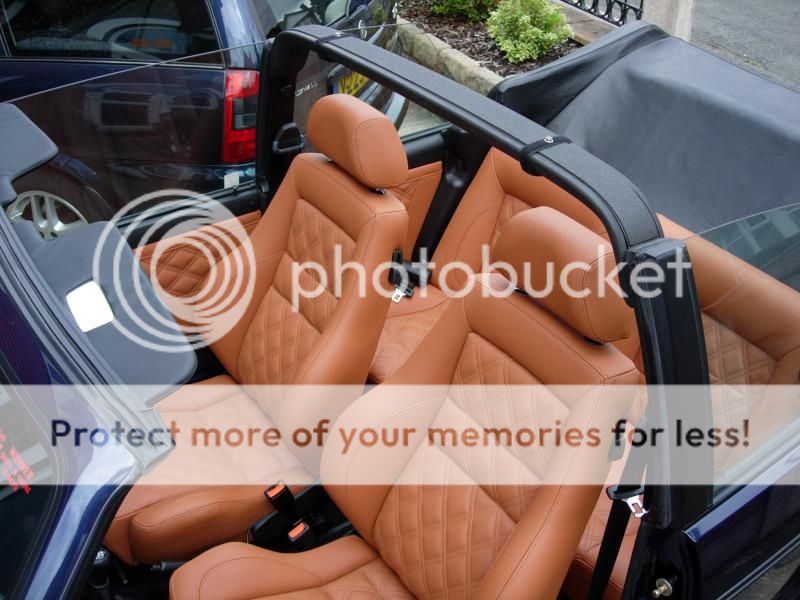My car audio install
Posted
#1418363
(In Topic #186763)
Local Hero

I never wanted to change my car from stock, however this build has taken me further away from my first design brief than I could have ever imagined.. But for good reasons..
First of all, I decided that a decent set of components in the existing door pods, with tweeters either side of the dash and a sub in the boot would be enough.. However, I realised immediately that it just wasn't good enough.. The reason being that the front door cards are paper thin and so in an attempt to maintain originality in the interior, I decided to build a shelf for when driving with the hood up.. Kind of pointless when the hood is down, however I had to try to get the sound I had set out to get and also for the show aspect, it needed to look good.. All the time, my initial design brief of keeping the car standard was pushing me in the wrong direction..
Anyhow, here is the first shelf I built.
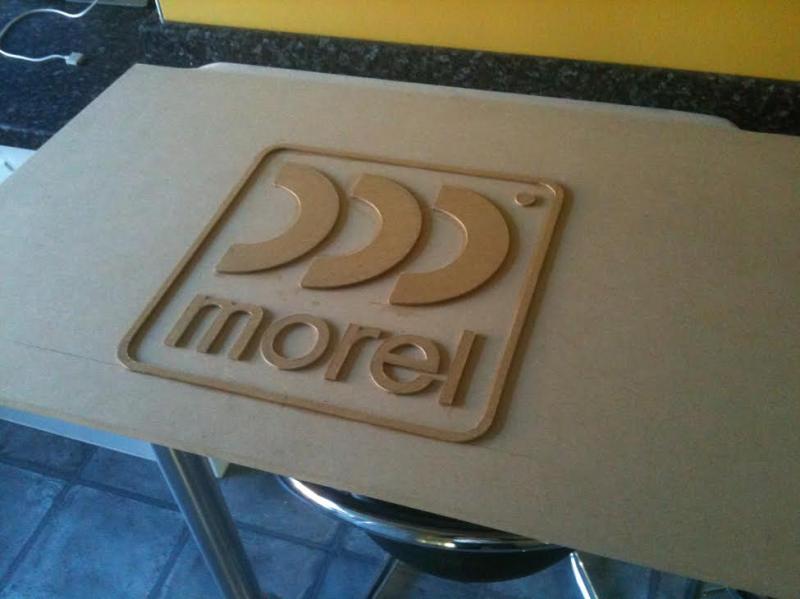



This shelf was used in conjunction with my first sub enclosure made from 18mm mdf.


The amplifiers at this stage were two DLS A5's (3 channel, stereo and sub)
Still not happy with this, I had already decided it was going to be scrapped, I experimented with porting.. So I built a new sub box, again from 18mm mdf and ported the boxes on the shelf.. All internal box volumes and port sizes were critical throughout this build. You can get calculations on various websites such as DIY audio and video.com. The size of the box and length and diameter of the port all control the box tuning. The lower you can tune the box the better for musicality.

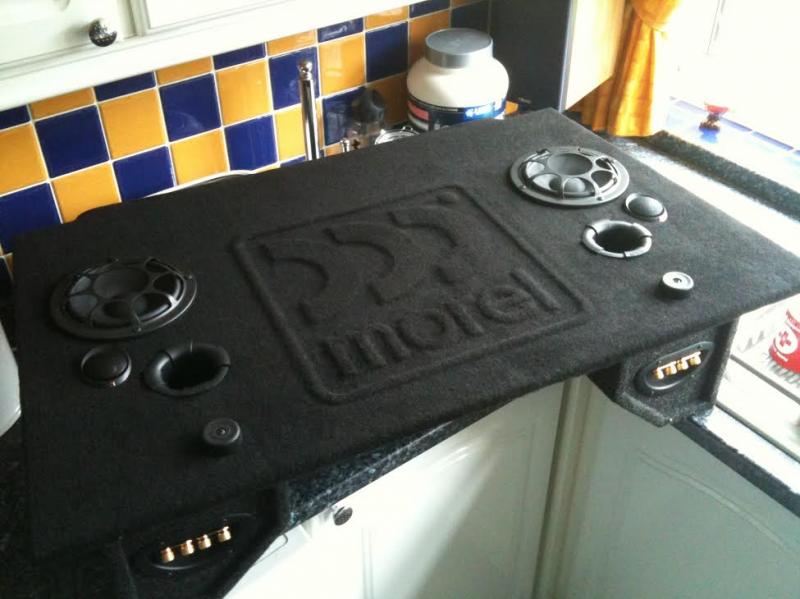
At this point I was also experimenting with cables of all kinds.. Having read up on DIY solid core interconnects, I experimented with different diameters of solid core copper winding wire.. I was happiest around the 1.2mm diameter, however they were not quite as good as my chord interconnects, so these were scrapped too..

No I was in deeper than I had wanted to go, I decided to buy a better head unit. I first bought the Pioneer Dex-p90RS and Deq-p90 processor. These connect optically via a 5m optical cable to maintain purity of sound.. However I soon upgraded the head unit for a Pioneer ODR RS-D7R11 (one of the best head units money can buy, there are a couple on ebay at the moment for around £1,500)

You can see here the processor and two DLS A3's.. One amp driving the mid bass and the other one (upgraded by Gordon Taylor of Genesis) for the tweeters. The mdf structure (now carpeted and painted black) supports the upper shelf with two more amps and sub.

The square holes are for fans, thermostatically controlled by the amps in the lower chamber.

So, after not being happy with the first and second stages of my first shelf, I decided to have one last go with my new head unit and sound processor. The sound processor has time alignment and also 31 band graphic per side.. So I had better control of the sound.. All the time, I knew that sound from the rear was technically wrong, but the need to keep the interior looking standard was pushing me in this direction. So here is the final shelf I made.. This time predominantly made from 18mm Birch ply.

The speaker boxes (although not shown) had a labyrinth style internal baffling to extend the negative wave prior to porting..





Posted
Local Hero

I made them from 7mm birch ply to make them behave more acoustically ie not flap about or let so much cancellation occur from the negative wave from the rear of the speakers. I got some scrim foam and material and trimmed them to suit the car and made speaker pods.. The tweeter and mid were angled towards me.. I changed the angle quite a few times before I was happy.. Anyhow, these are the prototypes…

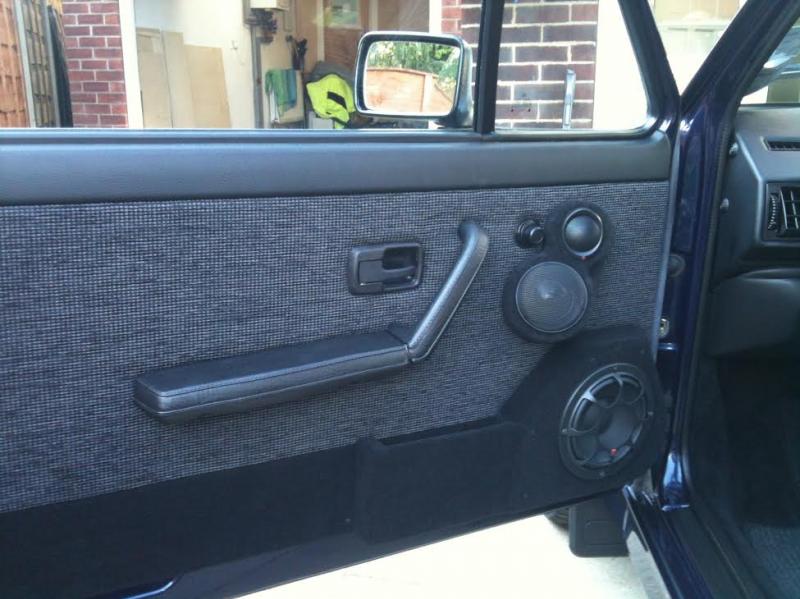
I made a new sealed sub from Birch ply to use with this new front end and sub set up.. Sealed are more musical, but not quite so low..


Following the success of the front door card prototypes.. I binned them off and made some adjustments as seen below.. the main one being slightly smaller pods and an angled bass door pod also..

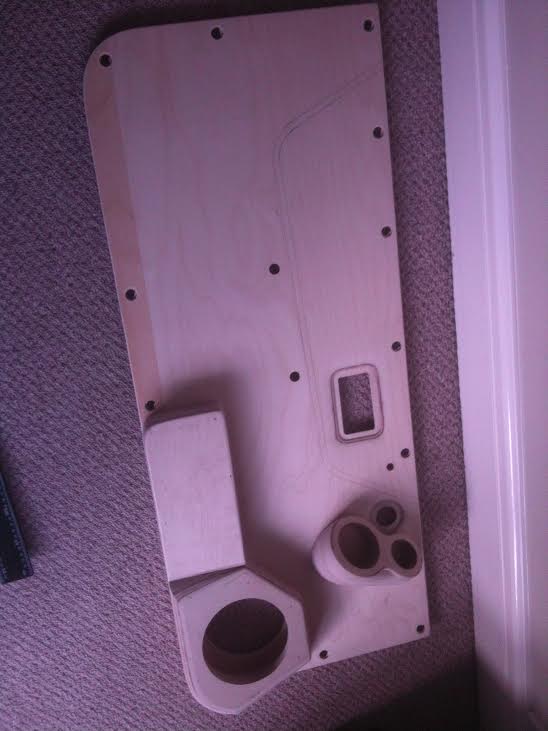
The boot install at this point is finished.. A few pics can be seen below.. the lights were £8.39 off ebay and are fully remote control.. A great finishing touch.. I stuch Velcro strips on the under side of my shelf, then stuck 4 light strips to the hook side of the Velcro and fitted them.
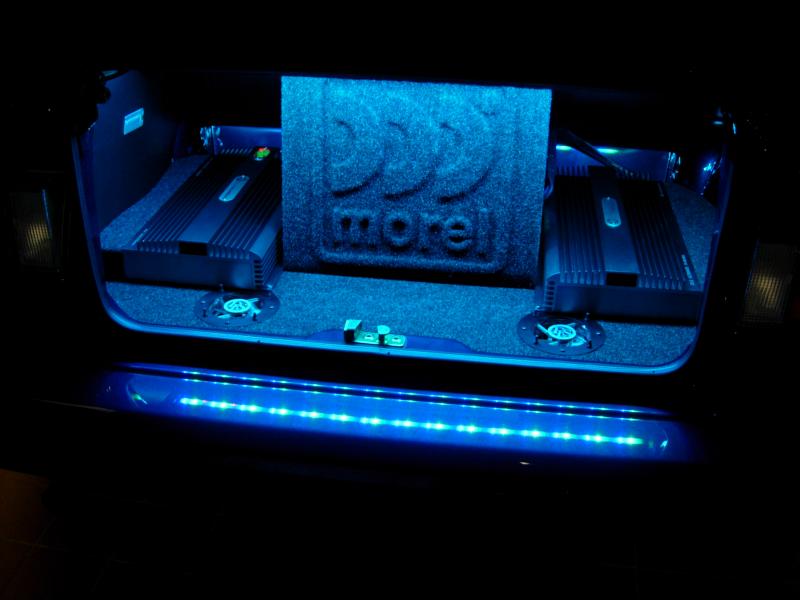
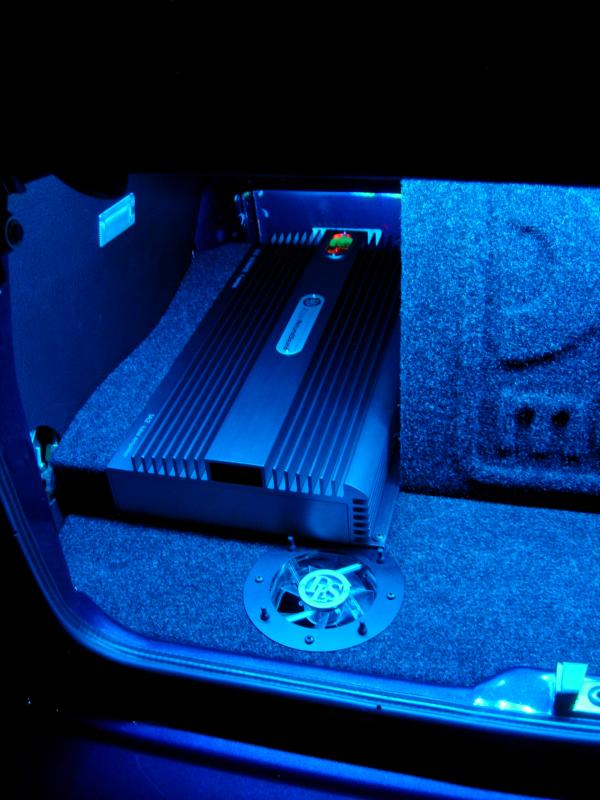


So… The unfinished door cards needed trimming up.. As I said earlier, I had now decided that to protect my interior, I was coming out and being stored for the future.. In place of the original seats, I sourced an immaculate set of recaro's from a guy who got them in from Poland. I stripped and re painted the sub frames and the whole interior is in at the trimmers now for full tan leather in Bentley diamond quilt.. I'll post some pics of the interior when I get it back..
For those of you wanting any technical advice, have a read of the thread "Car audio set up" in mk1 golf chat.. It might be a few pages back now, but I covered a lot in there which should answer most questions.. I'm sure that what I have done isn't to everyones taste, however, my car will now be exactly how I want it with the interior protected for the future and everything is totally reversible without any damage whatsoever.. hope you like it..


Posted
Marketing Manager


1973 BMW 3.0CS "Helga"
1981 VW Golf GTi "Agolf"
1986 Ford Escort RS Turbo S2
1987 BMW M535i - 'Klaus'
Instagram: @ahmet_e9
Posted
Local Hero

If you sat down at home and listened to a top class hifi, you would love it I'm sure.. What I have attempted to do is recreate that level of quality in a car and the problems that need to be overcome require a great deal of work to overcome.. Its a lot more difficult than setting up a home hifi because you are actually using parts of the car as speaker boxes, then sitting out of position in relation to them.. Reflections, interference, vibrations all play a part in making it really difficult..
I just like beautiful music.. I'm a purist.. I hope one day you get to see my car.. I'll give you a demo and change your mind about what car audio can actually do..
Posted
Marketing Manager

Cleared things up for me fella!walt said
So please don't confuse what I am doing with the kind of thing you might hear in a Vauxhall corsa driven by a 19 year old in a bassball cap..
I get entirely what you mean with regards to the quality of the sound. The majority of people that I see/hear at meets with large boot build/multiple speakers in their doors appear to only fit them on too see who has the loudest system/most bass. In my book decking out your hatch with enough subs and speakers to warrant multiple batteries in the boot simply and tune them specifically to make their body panels and chassis flex from being the same resonant frequency just marks someone out for me as a bit of a twonk.
If you're doing the opposite then kudos to you. Engineering a sound system correctly into a car as you are doing must be one hell of a task with all the different materials used. Personally I'd prefer to make my car as light and as fast round the corners as possible (to the point where I binned the ICE, electric mirrors and central locking from my RS Turbo), but everyone's different and the purpose of the vehicle / nature of how it is going to be used all play a factor in it.

1973 BMW 3.0CS "Helga"
1981 VW Golf GTi "Agolf"
1986 Ford Escort RS Turbo S2
1987 BMW M535i - 'Klaus'
Instagram: @ahmet_e9
Posted
Settling In

Posted
Local Hero

Posted
Local Hero

"Making Cabbies More Beautiful One Roof at a Time"
Posted

Moderator

Mind if I pm you about my install when it's time to get it all sorted?
Smudger
Posted

Old Timer

1980 Series 1 GTI (gone now .. what a mistake selling her!)
1979 Series 1 LD - the Mandarin Dragon … gone as well. oh dear.
1979 Series 1 LD - the Mandarin Dragon … gone as well. oh dear.
Posted
Local Hero

The most important aspect of car audio is installation. Understanding how a speaker works is vital, otherwise you can throw as much money as you like at it and it will never sound any good.
If you were to hold a 12" sub by the magnet and play some bass heavy music, all you would hear would be the frequencies shorter than the shortest distance from the front to the back of the speaker. This is because for every positive sound wave that a speaker produces from the front, an equal and opposite sound wave is produced from the rear. If they can meet, they cancel out. This is why speakers are put into cabinets. The cabinet design and construction also play a part in controlling this negative sound wave, however, to prevent going off on a tangent completely into home audio, I want to keep this simple and just say that the density and solidity of the cabinet are very important.
What you are trying to do is create the same qualities that a home audio speaker has, but in your car. This is impossible due to reflections, vibrations, speaker positioning, mounting material, etc etc etc. However we can do the best of a bad job by ensuring are speakers are mounted as solidly as possible, with as little cancellation as possible.
If the driver can vibrate, then the sound wave will be affected by stretching or compressing of the sound wave. An example of this in extreme is the Doppler effect which can be demonstrated when an emergency vehicle passes you with the sirens going. As it approaches you the sound waves are compressed and as it passes, they are stretched and the tone noticeably changes pitch. Ok, so in a car, a woofer bouncing around in a door card won't change the pitch in one go like that, but it cannot produce a true sound if it is vibrating in and out of time with itself.
Dynamat or fat mat (essentially roofing flash band) helps make your door less like a kettle drum and prevents the resonating. It is a great sound proofing material too. This in itself is a great upgrade and pound for pound will give some of the most noticeable improvement.
Borednow mentioned the direction being important and he is absolutely right but I can hopefully explain why. The longer the sound wave, the less directional it is and the exact opposite is true of treble. Which is why a home cinema system will have small effect speakers and a sub which covers all the bass. The effect speakers positioning is vital because they deliver only mid range and treble, creating the effects that flash around you. The sub however is not directional and can be positioned anywhere. Taking this back to the car, we need the tweeters to be in the right direction for our listening and the sub can go quite happily in the boot.
So how directional are they and what happens if we put them in the wrong position?.. Well a soft dome tweeter or mid range speaker will be very directional. They look like they should radiate sound quite wide, however, they don't and are very directional in the way they send the sound waves, add to that the fact that treble is directional anyway and you have quite a focussed beam of sound. Borednow mentioned his friends car with low tweeters which over came their low positioning by being at exactly the right angle. Unwanted effects can be created by reflections from the glass and can be very noticeable.
Amplifiers.. Nobody has mentioned classes of amplifier yet. the ones you may have heard of are class A and class D. Most class A amps are actually class AB but advertise as class A. Class A gives the highest quality sound output, however requires a massive amount of power, whereas class D gives a lower quality sound output but is much more efficient and where sound quality is less important ie subwoofers, the class D amp is better suited. Class AB amps switch from class A at low volumes to class AB as the volume increases to balance quality and consumption and be more efficient than a true class A amp. So how does this affect you?.. Basically class A or AB for the front speakers, class D for the sub is the norm.
When choosing your head unit, go for one with high voltage pre outs. For example 6v would be considered high. The higher the initial signal, the cleaner the sound will be. Keeping the gains low on the amps will also prevent unwanted hiss. This can be caused by RFI interference picked up from power cables. Keeping the power and information cables away from each other is also vital.
Nobody has mentioned batteries yet. Power supply plays a massive part in clean sound and everything working properly. I don't want to go into power caps now because you don't need one for the size of system you are building. A good battery will allow the amp to draw enough power, however this is dependant on good earthing and quality thick cable. I double earth my battery to ensure it can perform to the best of its ability. I just want to take this opportunity to explain the different types of battery because if you sit in your car playing with your stereo for a long time, you will kill your normal lead acid battery..
There are several types of battery on the market, you may be familiar with leisure batteries and start batteries on a camper van for example, but what is the difference?.. Well, a start battery gives short bursts of high power, then charges up again. They do not like to be deep cycled, which is when you leave the lights on and or play with the stereo until it goes flat. The reason being that sulphate crystals form on the lead when the charge is low and then it will not perform as well.. An ever decreasing spiral to needing a new battery.. A leisure battery however doesn't give short bursts of high power but will deep cycle due to the inside of the battery being dry or gel instead of water and acid. So the crystals don't form anywhere near as quickly. So what would be really nice is one battery that could do both.. Give short bursts of high power and also withstand being deep cycled.. Well there is.. Its called a stop start battery or AGM (absorbed glass mat). To give you an idea of performance. A normal lead acid battery gives 20,000 cold starts. A bosch silver battery by comparison gives 50,000… A Varta stop start AGM battery gives 360,000 cold starts.. The acid is absorbed into glass fibre and being dry, prevents the sulphate crystals forming on the lead. A great audio upgrade and believe it or not, very noticeable over a poor battery. Bass is tighter and punchier.
My advice is to go for a front end and sub set up. Forget rear speakers. You would cry if you saw the rear shelves I have built and thrown away due to unwanted effects. Sound from the rear just confuses sound staging and depth of field and if you do the front end right, you only need a sub to fill in the bass. Matching speaker sizes is important too as they each take care of a certain frequency range. For example, if you had a 6" and tweeter set up in the front, don't go bigger than a 10" sub.. If you had a three way set up in the front with 8" drivers mids and tweeters, then you can go to a 12" sub. But if you have say a 5" driver and tweeter up front and a 12" sub, it just won't match, there will be frequencies missing or so poorly represented that it just won't sound right.
The signal will degrade along its path from cd player to speakers and keeping this loss to a minimum is vital.. Use good cables and keep the information from the pre outs away from power supplies, use good speaker cables and connectors. Hope this helps, I'm sure I missed loads of stuff out..
Posted
Local Hero

A crossover is a filter, it either allows or cuts off signals at certain frequencies. Let me explain. Lets look at just a tweeter to begin with, obviously we want to protect it from any bass frequency waves. The most basic level of crossover would be a capacitor of a certain value in series prior to the tweeter. What this does is only allow frequencies above a certain range to pass.. This would be called a first order or 6 decibel per octave crossover (which is the most shallow roll off). The mid bass would have an inductor in series, prior to the driver instead of the capacitor which would only allow bass to pass.. So then, we know a capacitor allows only treble to pass through and an inductor allows only bass (governed by their specific value of course) so, if we add to our 6 decibel per octave crossover, an inductor in parallel with the tweeter and a capacitor in parallel with the mid bass driver, we now have a 12 decibel per octave crossover, which gives a proportionally steeper roll off.
Most car audio passive crossovers (which are the type I just described) go no further than 12 decibel per octave crossovers. (To go higher normally involves a sound processor.) Which brings me to the phase control on your amp (or head unit if it has one in the menu for a dedicated subwoofer output). When crossing over at 12 decibels per octave, the phase inverts by 180 degrees which means it is exactly opposite how it started out. Remember I mentioned cancellation in my last post, well this is why we have a phase control at 180 degree's, its not rocket science, at either 0 or 180 degrees you will get less bass due to cancellation. so try both and whichever gives you the most bass is the correct phase setting for your set up.
So how many amplifiers do you need?.. Well it depends on how many channels you are using, I think earlier in this post, someone said one channel per speaker.. This would be true in a fully active set up which involved a sound processor with active crossovers where each individual tweeter, mid, woofer and sub would indeed have its own amplifier. However, when using passive crossovers, whether a two way or three way crossover, you only need one channel to feed each crossover because the crossover itself sorts out which speaker gets which frequency (and also is wired to keep the combined resistance to 4 ohm).
One last thing, just in case you wanted to know how to wire more than one sub for example and wondered what effect this would have, basically, if you wire the two subs in series, the resistance is doubled, wire them in parallel and the resistance is halved (being the louder option). A good amp designed for use as a subwoofer amp may say 1 ohm stable for example. So using two 4 ohm subs in parallel will be fine. Hope this is all useful.. Walt..
Posted

Moderator

Posted
Local Hero

Posted
Local Hero

Posted
Moderator



The detail and understanding involved in the build is mind blowing to me. I almost feel ashamed of my poor install now
Can't believe you threw away all those shelves
My Audiophile hat is currently off to you Sir!
Thanks for the inspiration.
Ian
Posted
Settling In


Posted
Local Hero

Posted
Settled In



1992 clipper…….. "THE BLACK ONE"
1990 mk1 caddy…… " THE PIKEY WAGON"
1969 type 3 notchback
1990 mk1 caddy…… " THE PIKEY WAGON"
1969 type 3 notchback
Posted
Chairman




The Birdie Song will sound great on it!
0 guests and 0 members have just viewed this: None.















